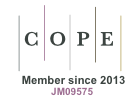Edible wild plant use in the Faroe Islands and Iceland
Abstract
Keywords
Full Text:
PDFReferences
Svanberg I, Łuczaj Ł, Pardo-de-Santayana M, Pieroni A. History and current trends of ethnobiological research in Europe. In: Anderson EN, Pearsall DM, Hunn ES, Turner NJ, editors. Ethnobiology. Hoboken NJ: Wiley-Blackwell; 2011. p. 191–214.
Łuczaj Ł, Szymański WM. Wild vascular plants gathered for consumption in the Polish countryside: a review. J Ethnobiol Ethnomed. 2007;3(1):17. http://dx.doi.org/10.1186/1746-4269-3-17
Guðjónsson SV. Folkekost og sundhedsforhold i gamle dage: belyst igennem den oldnordiske litteratur. København: Arnold Busck; 1941.
Jonsson G. Changes in food consumption in Iceland, 1770–1940. Scand Econ Hist Rev. 1998;46(1):24–41. http://dx.doi.org/10.1080/03585522.1998.10414677
Zutter C. Wood and plant-use in 17th–19th century Iceland: archaeobotanical analysis of Reykholt, Western Iceland. Environmental Archaeology. 2000;5:73–82.
Tómasson T. Iceland: country report to the FAO international conference on plant genetic resources. Leipzig: FAO; 1996.
Guttesen R. Food production, climate and population in the Faeroe Islands 1584–1652. Geogr Tidsskr. 2004;104:35–46.
Guttesen R. Plant production on a Faeroese farm 1813–1892, related to climatic fluctuations. Geogr Tidsskr. 2001;101:67–76.
Rasmussen H. Die Nahrungsforschung auf den Färöer. Ethnol Eur. 1971;5:49–52.
Joensen JP. Fiskafólk. Ein lýsing av føroyska húshaldinum í slupptíðini. Tórshavn: Føroya Sparikassi; 1982.
Kristinsson H. A guide to the flowering plants and ferns of Iceland. Reykjavik: Örn og Örlygur; 2010.
Jóhansen J. Studies in the vegetational history of the Faroe and Shetland Islands. Tórshavn: Føroya Fróđskaparfelag; 1985. (Annales Societatis Scientiarum Færoensis; vol 11).
Harshberger JW. The gardens of the Faeroes, Iceland, and Greenland. Geogr Rev. 1924;14(3):404. http://dx.doi.org/10.2307/208421
Jóhansen J. Medicinal and other useful plants in the Faroe Islands before ad 1800. Bot J Scotl. 1994;46(4):611–616. http://dx.doi.org/10.1080/13594869409441771
Svanberg I. The use of wild plants in the Faroe Islands 1590–1990: a contribution to Scandinavian ethnobotany. Svenska Linnésällskapets Årsskrift. 1998;1996–1997:81–130.
Svanberg I. Plant knowledge as indicator of historical cultural contacts: tanning in the Atlantic fringe. In: Pieroni A, Vandebroek I, editors. Traveling cultures and plants: the ethnobiology and ethnopharmacy of migrations. Oxford: Berghahn Books; 2007. p. 227–244.
Guðmundsson G. Gathering and processing of lyme-grass (Elymus arenarius L.) in Iceland: an ethnohistorical account. Veg Hist Archaeobot. 1996;5(1–2):13–23. http://dx.doi.org/10.1007/BF00189431
Olafsen E. Vice-Lavmand Eggert Olafsens og Land-Physici Biarne Povelsen Reise igiennem Island, franstaltet af Videnskabernes Sælskab i Kiøbenhavn. Sorø: Videnskabernes Sælskab; 1772. (vol 1–2).
Svabo JC. Indberetninger fra en Rejse i Færøe 1782 og 1783. København: Selskabet til Udgivelse af færøske Kildeskrifter og Studier; 1959.
Rasmussen R. Gróðranýtsla fyrr í tíðini: til matna, til lækningar, til litagerðar og til ídnaðar. Tórshavn: Landnám; 1946.
Halldórsson B. Grasnytjar. København: August Friedrich Stein; 1783.
Kristjánsson L. Íslenzkir sjávarhættir. Reykjavík: Menningarsjóður; 1980. (vol 1–5).
Høeg OA. Planter og tradisjon Floraen i levende tale og tradisjon i Norge 1925–1973. Oslo: Universitetsforlaget; 1974.
Turner NJ, Łuczaj ŁJ, Migliorini P, Pieroni A, Dreon AL, Sacchetti LE, et al. Edible and tended wild plants, traditional ecological knowledge and agroecology. Cr Rev Plant Sci. 2011;30(1–2):198–225. http://dx.doi.org/10.1080/07352689.2011.554492
Holmboe J. Mura (Potentilla anserina L.) og dens bruk som matnyttig plante i ældre og nyere tid. Svensk Botanisk Tidskrift. 1928;22:160–168.
Svanberg I. Field horsetail (Equisetum arvensis) as food. Fróðskaparrit. 1997;45:45–55.
Mohr N. Forsøg til en islandsk naturhistorie, med adskillige oekonomiske samt andre anmærkninger. København: Christian Friderik Holm; 1786.
Svanberg I. Kvannen (Angelica archangelica) på Färöarna och Island. Gardar: Årsbok för Samfundet Sverige-Island i Lund-Malmö och Samfundet Sverige-Färöarna. 2008;38:22–28.
Skaale Ö, Johannesen M. Matur og matgerð. 5th ed. Tórshavn: Bókaforlagið Grønalið; 1990.
Nordal A. Über einige norwegische volksmedizinische Skorbut-Pflanzen, und ihren Vitamin-C-Gehalt. Nytt Mag Naturv. 1939;79:193–231.
Debes LJ. Færoæ et Færoa Reserata, det er: Færøernis oc færøeske Inbyggeris beskrifvelse. København: Matthias Jørgensøn; 1673.
Bjarnason AH. Íslensk flóra með litmyndum. Reykjavík: Iðunn; 1983.
Aaronson S. Algae. In: Kiple KF, Ornelas KC, editors. The Cambridge world history of food. Cambridge: Cambridge University Press; 2000. p. 231–249.
Albuquerque UP, Hanazaki N. Five problems in current ethnobotanical research – and some suggestions for strengthening them. Hum Ecol. 2009;37(5):653–661. http://dx.doi.org/10.1007/s10745-009-9259-9
Joensen HD. Um hvonnina í Føroyum, serliga um nýtsluna til matna og um hvannsárið. Varðin. 1951;29:129–154.
Simonsen M. Konurák. Tórshavn: Mentunargrunnur Studentafelagsins; 1989.
Fosså O. Angelica: from Norwegian montains to the English trifle. In: Hosking R, editor. Wild food: proceedings of the Oxford Symposium on Food and Cookery, 2004. Totnes: Prospect books; 2006. p. 131–142.
Mehler M. From self-sufficiency to external supply and famine: foodstuffs, their preparation and storage in Iceland. In: Klápste J, Sommer P, editors. Processing, storage, distribution of food food in the Medieval rural environment. Turnhout: Brepols; 2011. p. 173–186.
Gísladóttir H. Substitutes for corn in Iceland. In: Lysaght P, editor. Food from nature. Uppsala: The Royal Gustavus Adolphus Academy for Swedish Folk Culture; 2000. p. 148–154. (Acta Academiae Regiae Gustavi Adolphi LXXI; ).
Nelson MC, Svanberg I. Lichens as food: historical perspectives on food propaganda. Svenska Linnésällskapets Årsskrift. 1987;1986–1987:7–51.
Whitney CW. A survey of wild collection and cultivation of indigenous species in Iceland and the Faroe Islands [Master thesis]. Witzenhausen: University of Kassel; 2011.
Whitney CW, Gebauer J, Anderson M. A survey of wild collection and cultivation of indigenous species in Iceland. Hum Ecol. 2012;40(5):781–787. http://dx.doi.org/10.1007/s10745-012-9517-0
Łuczaj ŁJ, Dumanowski J, Köhler P, Mueller-Bieniek A. The use and economic value of manna grass (Glyceria) in Poland from the middle ages to the twentieth century. Hum Ecol. 2012;40(5):721–733. http://dx.doi.org/10.1007/s10745-012-9513-4
DOI: https://doi.org/10.5586/asbp.2012.035
|
|
|







